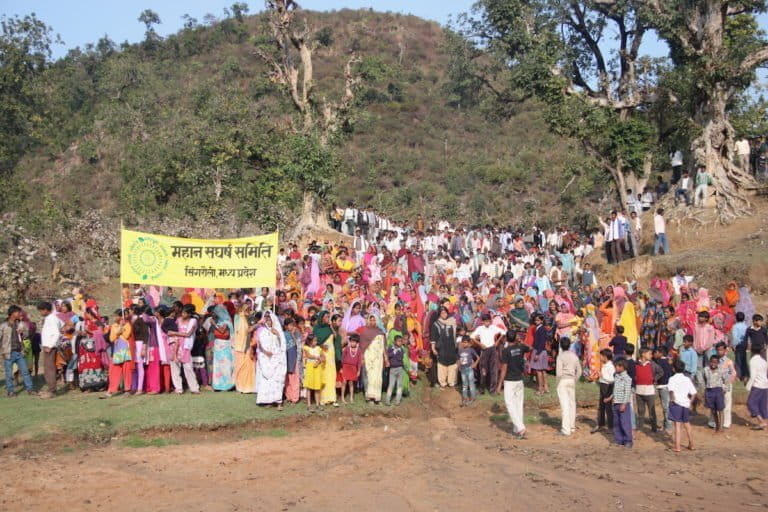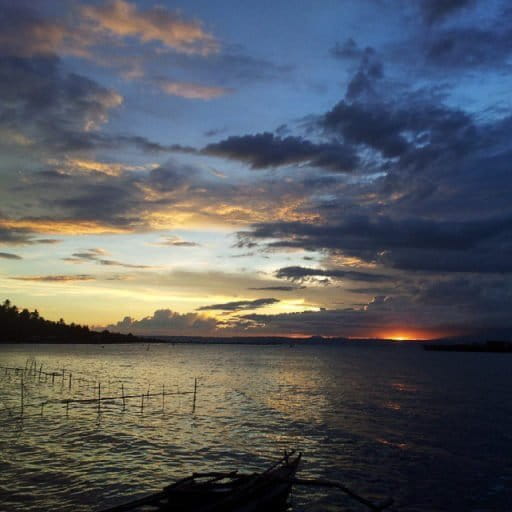- A report by human rights groups identified 41 new coal projects with ties to the World Bank Group. These projects are funded by private banks and companies that have received loans and investment from the International Finance Corporation (IFC), part of the World Bank Group.
- The World Bank Group has restricted funding for coal projects since 2013, and its president has recently made strong statements against coal power.
- Among the projects with IFC links are controversial coal fired power plants like the Mahan plant in India, the Lanao Kauswagan power station in the Philippines and the Rampal coal plant in Bangladesh.
- IFC maintains it has no direct exposure to coal projects, and does not provide intermediaries with funds for the purpose of financing coal projects.
A coal boom in Asia could destroy any chances of meeting global climate goals, World Bank Group President Jim Yong Kim pronounced earlier this month at the Group’s annual meeting. “If all the new coal plants on the books earlier this year were constructed – especially in Asia – it would be impossible to stay below two degrees,” he said, referring to the temperature change target set in the Paris Agreement.
Slowing the growth of coal fired power plants is “perhaps the most urgent” task for global leaders trying to curb climate change, Kim said, emphasizing the need for a “greener finance sector.” Since 2013, the World Bank Group limited its own financing of new coal projects to “rare circumstances.”
Meanwhile, according to a report led by US-based NGO Inclusive Development International, the Asian coal boom Kim describes as a “disaster” has been quietly enabled by the International Finance Corporation (IFC), the private sector arm of the World Bank Group.
After two years of sifting through a commercial banking database, researchers found the IFC has financial ties to 41 new coal projects launched since 2013. These projects include highly controversial power plants like the Mahan plant in India, the proposed Lanao Kauswagan power station in the Philippines and the Rampal coal plant in Bangladesh, each of which has prompted protests by local activists who fear the projects will cause severe environmental, social and human rights problems.

In each case, IFC provided multi-million dollar loans or investments to local banks and investment companies, who in turn put money into coal projects.
“It is a huge contradiction for the World Bank Group to pledge to stop funding coal projects, except in rare circumstances, and then funnel billions of dollars into commercial banks and funds that [are] among the leading financiers of new coal projects,” said David Pred, Inclusive Development International’s managing director, in an email to Mongabay. “IFC has enormous influence over these banks and in many cases has representatives on their boards. If IFC was serious about its commitment to ‘greening the financial sector’ and directing funds away from fossil fuels toward renewable energy, then it could simply put coal projects on its Exclusion List, alongside weapons manufacturing, tobacco and casinos.”
From 2011 to 2015, IFC poured around $40 billion into commercial banks and private equity funds around the world, the report notes. Given the scope of this investment, researchers expected to find some controversial projects, said Kate Geary of the Bank Information Center, which participated in the report along with IDI and other human rights and environment NGOs. Still, Geary told Mongabay she was surprised by both the number of IFC intermediaries that support coal plants and the social and environmental problems those projects have caused. “The shocking thing is the scale of the suffering these loans are causing,” Geary said. “They’re getting away with murder because it’s hidden.”
Where does responsibility lie?
The funds in question come via IFC ‘s “financial intermediaries”: banks and investment companies IFC invests in or loans money to. Those intermediaries in turn invest in or lend money to a wide array of companies and projects, including coal mines and power plants.

“Take the proposed Rampal coal project in Bangladesh, which threatens the Sundarbans, the world’s largest remaining mangrove forest,” Pred said. “Between 2005 and 2014, the IFC provided over half a billion dollars to six large Indian financial institutions. After receiving IFC funds, these banks went on provide or arrange $7.5 billion in financing to the National Thermal Power Corporation, which co-owns the Rampal project along with dozens of other existing and pipeline coal projects in India.”
IFC spokesman Frederick Jones described its relationship with these banks and equity firms in a written statement to Mongabay: “IFC works through financial intermediaries to provide much-needed access to finance for millions of individuals and small businesses that it could not reach directly, as well as providing mortgages, insurance and digital financial services, promoting women-owned businesses and introducing environmental and social standards.” Jones also points to the more than $15 billion IFC has invested in “renewable power, energy efficiency, sustainable agriculture, green buildings and private sector adaptation to climate change.”

In accordance with World Bank Group policy IFC does not provide direct funding for coal projects, nor does it give loans to financial intermediaries “for the purpose of financing coal-related projects,” Jones says. “IFC targeted loans to financial intermediaries are ring-fenced to prevent such use, and IFC has excluded coal projects from private equity funds and other investments. However, the 2012 Sustainability Policy does not prohibit our equity clients, nor the proceeds of bonds or general purpose loans, from potentially being able to fund coal plants, so there may be some indirect exposure,” he writes.
Others view the IFC’s responsibility differently. “Of course IFC would say that they don’t invest in financial institutions for the purpose of funding coal plants. But that’s like selling a convicted murderer a case of guns and saying that you intended it to be used for hunting rabbits,” argues Pred. “The fact is that IFC has outsourced over half of its total funding commitments to commercial banks, equity funds and other intermediaries in recent years. Most of these investments are general purpose loans or equity investments, which means that IFC is contributing to and profiting from everything that the intermediary finances from that point forward.”
Geary, too, contends that IFC should be held accountable for its indirect investments. To support this argument, she points to multiple cases where the IFC’s Compliance Advisor Ombudsman (CAO)—the body responsible for investigating complaints about IFC projects— has determined that projects funded by IFC intermediaries do fall under its remit. For example, the CAO agreed to investigate complaints about a 1,400 MW coal based power plant near Kamalanga village in India’s Odisha state. That project was supported by an investment from the India Infrastructure Fund, which in turn received IFC funds. In that case the CAO “identified a number of shortcomings in IFC’s review and supervision of the [India Infrastructure] Fund,” and put the project into a formal review process after mediation failed. A monitoring report will be released by early 2017.

Geary said she is not opposed to IFC making loans via intermediaries, as long as the funds are earmarked for small businesses or community-oriented projects like micro-insurance. But she thinks IFC should remove itself from large projects with potential for detrimental social and environmental impact. “The IFC has shown that it’s just not in control of this. It just shouldn’t be doing the high-risk stuff if it can’t be accountable,” she said.
“If the IFC wants to claim the credit for the good things that happen, they should also take responsibility for the bad things that happen,” Geary added. “Instead of just chucking money out the door and not really seeing where it ends up, we want the IFC to take responsibility.”
Pred also called for an immediate halt to IFC funding for fossil fuel projects. “In a world where we literally cannot afford to build a single new coal project without busting the Paris commitments and risking a climate catastrophe, there is no excuse for IFC to provide its capital and gold seal of approval to banks and equity funds that continue financing dirty energy,” he said.
Citation:
- Inclusive Development International, Bank Information Center, 11.11.11, Urgewald and Accountability Counsel, “Disaster For Us And The Planet”: How the IFC Is Quietly Funding A Coal Boom,” October 2016.
